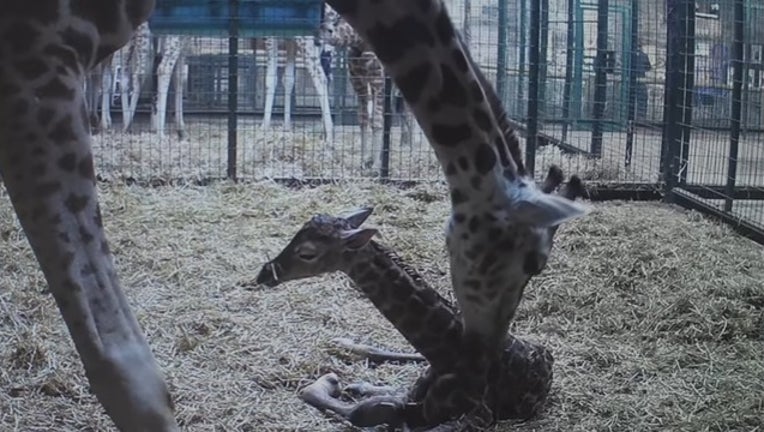A giraffe gave birth on camera; it wasn't April

It seems like April the giraffe has been "ready to give birth" for a few months, right? Just one week ago, her keepers excitedly declared her birth was imminent. It still hasn't happened.
The world has been waiting on April to have her calf at Animal Adventure Park in New York. Hundreds of thousands of people have watched the official stream, let alone the millions who have watched streams of the stream, waiting for April to deliver the calf.
Last weekend, the Animal Adventure Park said the vet was onsite and April was "out of normal behavior," like leg-lifting, pinning her ears back, and raising her tail. The park said those were signs that she was experiencing contractions. They also reported her appetite was down but she was still eating carrots and lettuce.
Here we are, a week later, and still no giraffe from April.
But - there WAS a giraffe born this week and it was on camera! The Chester Zoo in Chester, England, captured video of a rare giraffe being born.
A Rothschild giraffe was born in what officials are calling a "precious moment" and "stunning" footage:
“Orla delivered her youngster smoothly following a four-hour labour; bringing an end to her 15-month pregnancy,” the Chester Zoo said.
Rothschild’s giraffe facts - courtesy of the Chester Zoo:
- Mum Orla is eight years old. She has previously given birth to two other calves at Chester Zoo, Millie and Kidepo
- Dad Meru is seven years old
- Rothschild’s giraffes are one of the most endangered of the nine sub-species of giraffe
- They are named after zoologist Lord Walter Rothschild, founder of the National History Museum in Tring, Hertfordshire
- The species is identified by its broader dividing white lines and has no spots beneath the knees
- Once wide-ranging across Kenya, Uganda and Sudan, the Rothschild’s giraffe has been almost totally eliminated from much of its former range and now only survives in a few small, isolated populations in Kenya and Uganda
- Estimates suggest that less than 1,600 Rothschild’s giraffes remain in the wild
- Roughly one-third of the surviving population of Rothschild’s giraffes live in zoos where carefully co-ordinated breeding programmes are creating a safety-net population for the species
- The main threat to the species now is loss of habitat and poaching for meat and hides
- In the past, giraffes were hunted for their tails, which were used as good-luck charms, sewing thread and even fly swats
- Predators to the Rothschild’s giraffe include hyenas, lions, crocodiles and leopards

